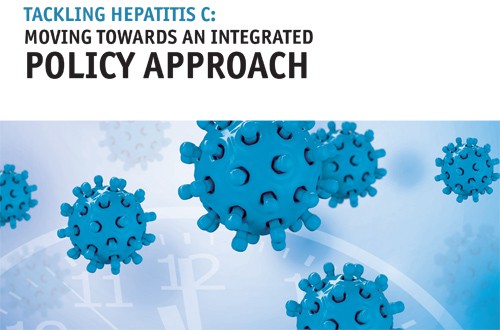
Governments around the world need to do more to address hepatitis C, according to a report backed by pharma company Janssen.
The report, Tackling hepatitis C: Moving towards an integrated policy approach, claims a lack of resources and information has meant national-led initiatives have been “thin on the ground” for the disease, which affects up to 170 million people worldwide.
Instead, it has been non-government organisations and patient groups that have led the way in driving awareness and providing support in hepatitis C, according to the report, which was published by The Economist Intelligence Unit (EIU).
This includes multinational organisations such as the World Hepatitis Alliance (WHA), the European Liver Patients Association (ELPA) and the Coalition to Eradicate Viral Hepatitis in Asia Pacific (CEVHAP), who have all helped contributed to growing global awareness of the disease – a blood-borne virus that is the leading cause of liver cancer and liver disease.
These groups are now working to turn that awareness into action via an integrated approach from policy makers and the World Health Organization (WHO).
“It’s an odd dynamic, where people are becoming more aware, but that hasn’t yet translated into real concrete action,” said Stefan Wiktor, team lead for the Global Hepatitis Programme at the WHO. “The idea is to try to harness some of this excitement and start moving it in a more aligned direction.”
The report puts such integration firmly at the top of the agenda for hepatitis C support, including moves to establish multiple official pathways for the exchange of information and advice between the WHO, technical advisers, patient groups and national governments.
Hepatitis C initiatives could also fit into existing programmes in related illness such as HIV and cancer, according to Charles Gore, president of the World Hepatitis Alliance.
“Where HIV overlaps, there is quite a lot of expertise in things like guidelines,” he said, referencing synergies in the diagnosis and treatment of both diseases.
He gave the specific example of the lab equipment associated with the President’s Emergency Plan for AIDS Relief (PEPFAR) that has been donated to developing nations with high levels of HIV.
“You just need to change the reagents and you can use 20 per cent extra capacity in some countries,” said Gore. “Given the high risk of liver cancer in HCV patients, similar funding could be available from cancer prevention budgets.”
Data is another important factor in tackling hepatitis C on a global scale, with the report suggesting surveillance of the disease needs to improve in addition to more accessible screening and diagnosis for vulnerable populations.
Financial support for the programme came from Janssen, one of the companies at the forefront of hepatitis C treatment.
Janssen’s main drugs in the area are Incivo (telaprevir), which was launched in 2011, and Olysio (simeprevir), which was approved in the US in 2013 and in the EU earlier this year.
Together with Merck & Co’s Victrelis (boceprevir) and Gilead Sciences’ rapidly growing Sovaldi (sofosbuvir), these treatments have caused a huge shift in the treatment of hepatitis C, with cure rates now as effective as 90 per cent in come cases.
Speaking about the report, Janssen’s global hepatitis disease area leader Gaston Picchio said: “By working with the local hepatitis C communities, Janssen aims to elevate the disease as a serious public health issue and is seeking commitment from everyone involved in the care of these patients to improve healthcare infrastructure and overall outcomes for all those affected.”




